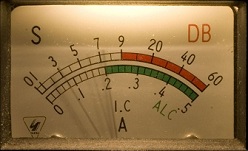I was headed out to a cub scout campout, and needed an antenna for Jamboree On The Air (JOTA). I needed something flexible, robust, and visible. After digging in the garage a bit, I saw a couple orange extension cords in the corner and had an “aha!” moment.
Feeding an extension cord from an autotuner is easy… but what if I could do something more modular…
Ultimately, I modified a duplex outlet in a plastic enclosure to feed two extension cords configured as a dipole.
the benefit is that the prongs on the cords are always in the outlets, thus reducing any shock hazards significantly.
My second task was figuring out how to leverage the fact that there are three wires in the cable… I don’t need current handling capacity, so wiring them in parallel isn’t helpful… bit how could I wire them in series?
this is what I came up with:
- First, break the connection between ground sockets on the two receptacles. in my case, this meant I needed to disassemble the outlet and cut the metal connection. Note that the ground terminal for the cords is intact.

- connect the shield and center conductors from a coax connector to the separated ground points.
- Reassemble the outlet
- break the jumper connecting the two hot terminals and two neutral terminals on the sides of the outlet

- jumper the hot to neutral terminals on each socket of the outlet
- install the outlet and coax connector in a PLASTIC electrical box. note; A 1:1 Balun would work well inside this box, if it will fit.
At this point, plugging 2 extension cords in will create a dipole usingnomly the ground wires in the cords.
the next part has to be done correctly… it’s the one component of this project that can be dangerous if not done right.
- take two three prong replacement plugs, and connect the GROUND and NEUTRAL terminals
- seal the open end
by plugging these adaptors into the ends of the cords, the three wires in each cord essentially zig-zag, but are, nonetheless, physically three times as long as a single cable. electrically, they will be shorter than the physical wire length due to capacitance within the wires.

The adaptors and outlets MUST be wired as I described (note: the small terminal is usually HOT and the larger slot is NEUTRAL – so the screw colors are right, but the prong sizes are reversed in the above image!) for this to work safely to ensure that if an unsuspecting person were to plug one of the adaptors into the wall, it would not create a short between hot and any other conductor.
I might even suggest cutting the hot terminal on the shorting plugs OFF to flag that said plug is not normal.
The overall goal here is to use unmodified extension cords as efficiently as possible for a “quick and dirty” antenna. ultimately, it worked, and, with a little extra work, minimized potential safety risks, as well.
to change the antenna length, multiple cords can be interconnected easily.
then one feature I cant quite figure out is a way to reconfigure this system as a loop without creating the dreaded suicide (double male) plug or cord. future designs, I guess….
finally- this was intended as a short term use idea, and is NOT intended to be a long term antenna. it is not weatherproof in any way. I would expect that it would not take long for it to corrode to the point of causing intermod and other issues.
